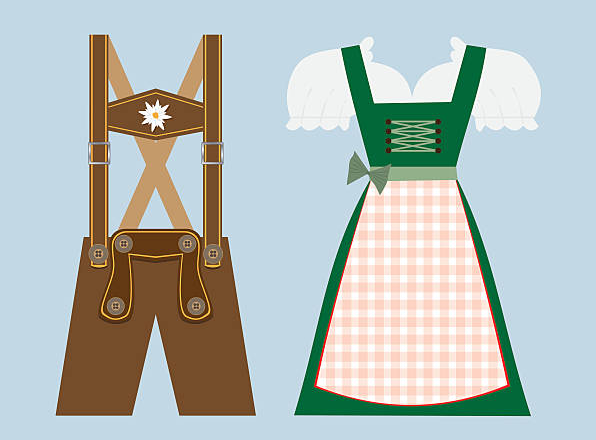Let’s talk about Comoros National Dress. Comoros, a small island nation nestled in the Indian Ocean, boasts a vibrant cultural heritage. One aspect that reflects the rich traditions and identity of the Comorian people is their national dress, known as Chiromani. Chiromani encapsulates the essence of Comorian culture, showcasing intricate designs, vivid colors, and historical significance. In this article, we will delve into the fascinating world of Comoros national dress and explore its deep-rooted connection to the nation’s history and identity.
Significance of Comoros National Dress
National dress serves as a powerful symbol, representing a country’s cultural heritage and collective identity. It preserves and honors traditions, while also serving as a visual representation of the nation’s unique customs and values. Comoros, with its diverse ethnic groups and historical influences, has a distinct national dress that encapsulates the beauty and richness of its cultural tapestry.
Origins of Chiromani: A Cultural Treasure
Chiromani, the national dress of Comoros, has ancient origins rooted in the island’s history. The term “Chiromani” translates to “clothing” in the local Comorian language. It reflects the amalgamation of cultural influences from Arab, Persian, Indian, and African civilizations that have shaped the archipelago over centuries.
Traditional Elements of Comorian National Dress
The M’sindzano: A Symbol of Cultural Identity
The M’sindzano is a traditional Comorian headwrap, often worn by both men and women. It is skillfully crafted using vibrant fabrics and intricately woven patterns, signifying the wearer’s ethnic group, social status, and even marital status. The M’sindzano is not merely a piece of clothing but an emblem of Comorian heritage and pride.
The Khanga: An Emblem of Expression
The Khanga is a versatile rectangular cloth, adorned with bold and colorful designs, symbols, and proverbs. It is worn by Comorian women and holds a special place in their hearts. The Khanga serves as a form of communication, expressing emotions, aspirations, and even societal messages through its intricate motifs.
The Lihiya: A Versatile Garment
The Lihiya is a loose-fitting garment worn by both men and women in Comoros. It is typically made from lightweight fabric and drapes elegantly, providing comfort in the tropical climate. The Lihiya represents modesty and simplicity, reflecting the Comorian way of life.
Modern Adaptations: Blending Tradition and Style
Fusion Fashion: Chiromani Influences
In recent years, Comorian designers and fashion enthusiasts have embraced the beauty of Chiromani and incorporated its elements into contemporary fashion. Fusion fashion showcases a harmonious blend of traditional Comorian designs with modern silhouettes, enabling the younger generation to connect with their cultural roots in a stylish and innovative way.
Creative Expression: Adapting the National Dress
While preserving tradition is crucial, Comorians also express their individuality by adapting the national dress to suit their personal preferences and lifestyles. Many Comorian men and women creatively blend traditional Chiromani elements with modern fashion trends, creating unique and personalized ensembles that showcase their identity.
Comoros National Dress in Daily Life and Celebrations
Everyday Wear: Practicality and Cultural Pride
In the daily lives of Comorian people, Chiromani remains an integral part of their attire. Both men and women incorporate elements of national dress into their everyday clothing, demonstrating their cultural pride and keeping the traditions alive.
Special Occasions: The Splendor of Traditional Attire
During weddings, religious ceremonies, and other festive occasions, Comorians proudly display the full splendor of their traditional attire. Elaborate and intricately designed Chiromani garments are worn, showcasing the skills of local artisans and celebrating the nation’s cultural heritage.
Preservation and Promotion of Comoros National Dress
Challenges and Initiatives
While Chiromani holds immense cultural significance, it faces challenges due to modernization and external influences. Efforts are underway to preserve and promote Chiromani as an integral part of Comorian identity. Organizations, cultural events, and educational programs are playing a vital role in raising awareness and ensuring the continuity of this cherished tradition.
Cultural Significance: Comoros National Dress
Chiromani goes beyond clothing; it embodies the spirit of Comoros. It serves as a tangible representation of the nation’s history, values, and unity. By embracing Chiromani, Comorians preserve their unique heritage and foster a sense of belonging within the community.
Conclusion
Comoros’ national dress, Chiromani, is a testament to the country’s cultural diversity and rich heritage. From the symbolic M’sindzano and expressive Khanga to the versatile Lihiya, Chiromani encapsulates the essence of Comorian identity. It serves as a powerful visual language, connecting generations, and preserving a remarkable tapestry of traditions. By embracing and promoting Chiromani, Comorians ensure that their cultural legacy endures, and future generations can proudly carry forward this remarkable heritage.
FAQs
1. Is Chiromani only worn on special occasions?
No, Chiromani is an integral part of everyday wear for many Comorian people, showcasing their cultural pride.
2. Can men also wear the Khanga?
The Khanga is primarily worn by Comorian women, while men often incorporate other elements of Chiromani, such as the M’sindzano or Lihiya, into their attire.
3. How can one acquire Chiromani garments?
Chiromani garments can be acquired through local artisans, markets, or specialized boutiques in Comoros. They can also be purchased online from various platforms.
4. Are there any specific customs associated with wearing Chiromani?
Wearing Chiromani is a matter of personal choice and cultural pride.However, certain customs and traditions may vary among different ethnic groups within Comoros.
5. How is Chiromani being preserved and promoted?
Various organizations and initiatives are working towards preserving and promoting Chiromani. They organize cultural events, workshops, and exhibitions, while also incorporating Chiromani into educational programs to raise awareness and ensure its continuity.
References
- “Comorian Culture and Traditions.” Comoros Islands Tourism.
- “The Splendor of Comorian National Dress: Chiromani.” African Heritage.
- “Comorian Women and the Khanga.” Comoros Islands Tourism.

